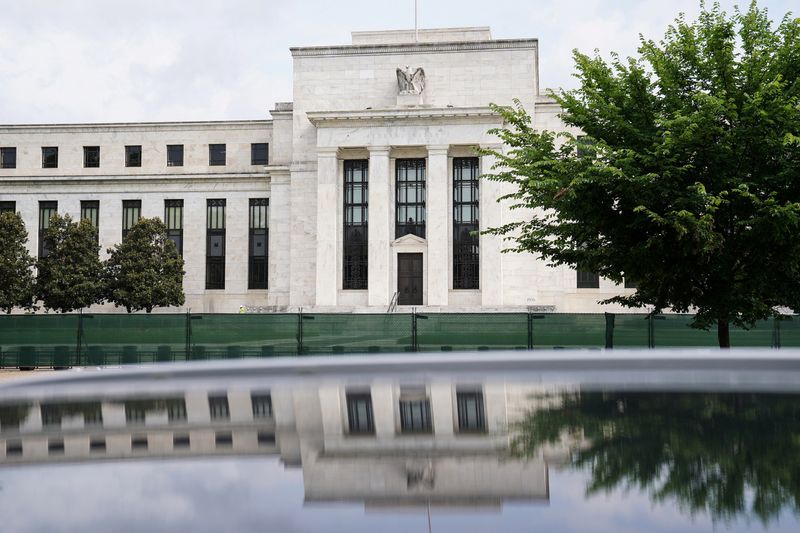By Yasin Ebrahim
Investing.com – As the debate persist on the whether the Fed will be able engineer a ‘soft landing,’ bringing down inflation without major economic bump, or a ‘hard landing’, hiking too much tipping the economy into recession, a third scenario is making its way into the conversation: ‘No Landing.’
In a ‘no landing’ scenario, the U.S. economy doesn’t slow down. Inflation remains above-trend. And the Federal Reserve is forced to not only hike rates by more than expected, but keep them elevated for longer.
The prevailing uncertainty from this scenario isn’t likely to prove fertile ground for risk assets to flourish.
The no landing scenario risks bringing back the “volatile market action we saw in 2022 because it reintroduces uncertainty about inflation and about the Fed,” Torsten Slok at Apollo Management said in a report.
The “blowout” January jobs report, Morgan Stanley says, has played a big role in stoking “discussion around the possibility of a ‘no landing’ scenario.”
The recent jobs report – showing robust job gains and a drop in the unemployment rate to 3.4%, a five-decade low – dealt a blow on bets for a near-term recession, but also flagged worries about upside risks to inflation that would likely spur the Fed to go further on rate hikes and keep policy tighter for much longer.
“[T]he more resilient the economy is, the more the Fed has to chase,” Morgan Stanley added, though stuck with its base case for a soft landing.
Traders are currently pricing in at least one more quarter point hike, while the odds for a May rate hike are gaining traction, according to Investing.com’s Fed Rate Monitor Tool.
But the risk is “this tightening cycle is not just about one more, two more, three more 25 basis-point increases, but something more fundamental,” Former Treasury Secretary Lawrence Summers said in a Bloomberg interview, citing upside risks to inflation.
Right now, however, investors continue to believe in the goldilocks, or soft-landing scenario – that has helped risk assets make a strong start to year, notwithstanding the wobble in S&P 500 this week.
“Our long-standing call that the US economy would experience a soft landing this year has become consensus, Morgan Stanley said, adding that a ‘no landing’ scenario, while not clearly defined, most resembles a soft landing.
“Our conversations suggest the phrase isn’t clearly defined and tends to gloss over the policy implications, but seems to most closely resemble a soft landing,” it added.
Still, a stickier path for inflation at a time when markets are betting against the Fed, albeit with far less resolve than in prior months, and the central bank has been keen to highlight that the disinflation process has started, would risk the Fed’s credibility and spur fresh uncertainty.
“That would put the Fed in a really difficult position,” Zhiwei Ren, Managing Director and Portfolio Manager at Penn Mutual Asset Management told Investing.com's Yasin Ebrahim on Tuesday.
The Fed is now talking about disinflation, but in a few months if we get higher inflation, they may have to change their rhetoric again, and that will affect their credibility,” Ren added. “I think that's the biggest risk.”
There are already signs emerging that the disinflation, driven mainly in the goods sector, may prove transitory.
Used-car prices unexpectedly climbed 2.5% last month, the most since the end of 2021, though that was driven by unseasonably strong demand, according to Cox Automotive.
Still a ‘no landing’ scenario will likely continue to creep into the conversation concerning the outlook for the economy as data in the coming days is expected to show a resilient consumer and price pressures that are on up, and up.
“Fed-fighters haven’t been faring so well of late and they might not find much love in this week’s developments either,” Scotiabank Economics said.
“US headline CPI inflation is likely to spring higher, core inflation is expected to remain resilient and markets may have to reassess how they prematurely wrote-off the US consumer at the start of the year as we brace for a strong retail sales print,” it added.
